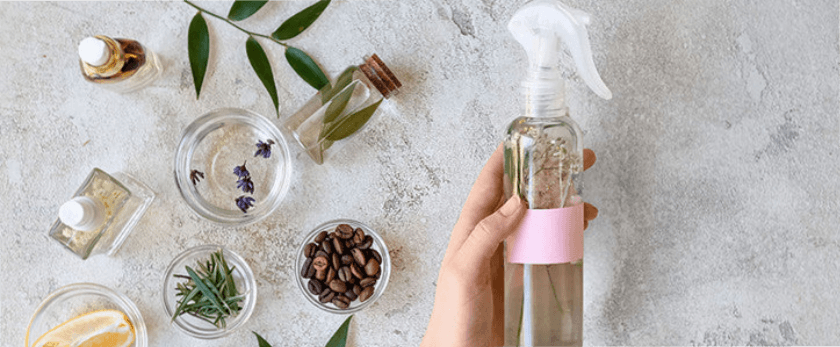Are you tired of using chemical-laden room sprays?
Do you want to make a positive impact on the planet while still enjoying a fresh and inviting home? Look no further, because homemade room sprays are the solution you've been looking for.
In this article, we will discuss the harmful effects of commercial room sprays on the environment and our health, and why making your own is a better and more sustainable option. We will also provide a list of ingredients and step-by-step instructions on how to make your own homemade room sprays. So let's get started on our journey towards a greener and fresher home!
Why Commercial Room Sprays are Bad for the Environment
Commercial room sprays, also known as air fresheners, are a popular household item used to mask unpleasant odors and create a pleasant scent in our homes. However, these seemingly harmless products have a significant impact on the environment.
-
Harmful Chemicals
Most commercial room sprays contain harmful chemicals such as phthalates, formaldehyde, and benzene. These chemicals are known to cause respiratory problems, allergies, and even cancer. They also contribute to indoor air pollution, which can be more harmful than outdoor air pollution.
-
Non-Recyclable Packaging
Commercial room sprays are often packaged in non-recyclable materials such as plastic bottles and aerosol cans. These packaging materials end up in landfills, where they take hundreds of years to decompose, releasing harmful chemicals into the environment.
-
Harmful to Wildlife
The chemicals in commercial room sprays can also harm wildlife. When these products are disposed of improperly, they can end up in water bodies, affecting aquatic life. The chemicals can also harm birds and other animals that come into contact with them.

Why Making Your Own Room Sprays is Better for the Environment
Making your own room sprays is a simple and effective way to reduce your carbon footprint and contribute to a healthier planet. Here's why:
-
Natural Ingredients
Homemade room sprays are made with natural ingredients, such as essential oils, which are derived from plants. These ingredients are non-toxic and do not harm the environment or our health.
-
Reusable and Recyclable Packaging
You can use reusable and recyclable materials to store your homemade room sprays, such as glass bottles or mason jars. This reduces the amount of waste that ends up in landfills and contributes to a more sustainable lifestyle.
-
Customizable Scents
When making your own room sprays, you have the freedom to choose your favorite scents and create unique blends. This allows you to personalize your home's fragrance and avoid the artificial and overpowering scents found in commercial room sprays.
What You'll Need to Make Homemade Room Sprays
Making your own room sprays is easy and requires only a few ingredients. Here's what you'll need:
- Distilled water
- Witch hazel or vodka
- Essential oils of your choice
- Glass spray bottle or mason jar
- Funnel
- Labels (optional)
Directions for Making Homemade Room Sprays
Now that you have all the necessary ingredients and materials, let's get started on making your own homemade room sprays. Follow these simple steps:
-
Choose Your Essential Oils
The first step is to choose the essential oils you want to use in your room spray. You can use a single oil or create a blend of different oils. Some popular options include lavender, peppermint, eucalyptus, and citrus oils.
-
Prepare Your Bottle or Jar
If you're using a glass spray bottle, make sure it is clean and dry. If you're using a mason jar, make sure it is clean and has a lid. You can also use a funnel to make it easier to pour the ingredients into the bottle or jar.
-
Add the Ingredients
Using the funnel, add 1/4 cup of witch hazel or vodka to the bottle or jar. Then, add 10-15 drops of your chosen essential oils. You can adjust the number of drops depending on how strong you want the scent to be. Finally, fill the rest of the bottle or jar with distilled water, leaving a little space at the top.
-
Shake Well
Close the bottle or jar and shake well to mix all the ingredients together.
-
Label Your Spray
If you're using a mason jar, you can skip this step. But if you're using a spray bottle, it's a good idea to label it with the ingredients and scent used. This will help you remember the recipe and avoid confusion in the future.
-
Use and Store
Your homemade room spray is now ready to use! Simply spray it around your home whenever you want to freshen up the air. You can also store it in a cool, dark place when not in use.
Responsible Disposal of Homemade Room Sprays
It's important to dispose of your homemade room sprays responsibly to ensure they do not harm the environment. Here are some tips for proper disposal:
- If you have leftover room spray, use it up or give it to a friend or family member to use.
- If you need to dispose of the spray, pour it into a sink or toilet and flush it down with water.
- Recycle the glass bottle or mason jar.
- If you used a plastic spray bottle, make sure to recycle it properly.
Conclusion
Homemade room sprays are a simple and effective way to reduce your carbon footprint and contribute to a healthier planet. By using natural ingredients and reusable packaging, you can create a fresh and inviting home without harming the environment or your health. So why not give it a try and make your own homemade room sprays today? Your home and the planet will thank you.










